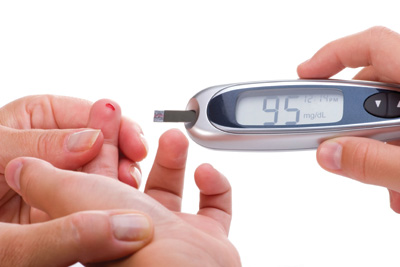Type 2 diabetes (T2D) was once categorised as a disease that generally attacks those in the older age group. But now, an increasing number of children are suffering from T2D, some of them even as young as 7 years!
What is type 2 diabetes (T2D)?
Diabetes is a chronic disease in which the body is unable to produce, or properly use insulin, a hormone that converts sugar and starches in food into glucose, the body’s main energy source. There are two types of diabetes: type 1 and type 2.
Type 1 diabetes is also known as insulin-dependent diabetes, and occurs when the pancreas produces very little, or no insulin at all. This happens as a result of the body’s defense system attacking the insulin-producing beta cells of the pancreas.
Until recently, type 1 diabetes was the only kind of diabetes found in children.
Type 2 diabetes is a much more common form of the disease, and mostly affects adults after the age of 30. However, T2D has become much more widespread among young children, especially those in developed and developing countries. This form of diabetes occurs when the pancreas does not produce enough insulin to overcome the body’s resistance to insulin.
Some kids/teenagers may develop thick, dark skin around the neck, armpits, groin, between fingers and toes, or on elbows and knees. This is a skin condition known as acanthosis nigricans.
T2D is on the rise
Both genetics and the environment have been found to play major roles in a person developing diabetes. Studies have shown that 75% of children who suffer from T2D have a parent or sibling who suffers from it as well. Yet, there are other factors that put children and adults at a higher risk of developing this chronic disease.
Recent research has shown that more and more young children are overweight and obese. Children nowadays spend too many hours watching television and playing computer games instead of going to the park and enjoying a good old game of football.
Furthermore, children also have a preference towards unhealthy foods such as burgers, nuggets, fries and carbonated drinks. Insufficient physical activity and unhealthy eating habits are all risk factors for diabetes.
In fact, being overweight or obese is one of the major risk factors for T2D, especially when most of the fat is accumulated around the abdominal area!
Alarming statistics
According to a survey done in 2007, Malaysia had the fourth highest number of diabetes cases in Asia, with a figure of 800,000!
There are many health consequences that can result from early on-set of diabetes. Children who have diabetes from young have a higher chance of developing complications, including eye disease and vision problems; kidney disease; heart disease and circulatory problems; nerve damage; and even problems with wound healing.
New studies have also brought to light startling facts; in the long run, diabetes may result in clogged brain blood vessels, which limit cognitive abilities. Furthermore, 30% of children who suffer from diabetes have been found to have lower bone mass, compared with those who did not have diabetes, resulting in weaker bones.
Prevention is the key
Managing diabetes is very important, especially in young children, to avoid future health problems. But, preventing the onset of type 2 diabetes is even better. A proper diet and lifestyle is crucial and children with T2D, or prone to T2D, may need to:
- Eat a healthy diet to achieve normal body weight, while gaining all the essential nutrients needed for growth and development. Some children may need to go on a low-salt/fat diet, especially if they suffer from high blood pressure or have high fat levels.
- Carry out regular physical activity; exercise helps the body to increase its response to insulin and burns off extra calories.
Living with diabetes may be quite a challenge, especially for younger children. However, detecting risk factors can help you prevent your child from developing type 2 diabetes in the first place.
Get your child to change his lifestyle and diet, making sure he is always eating healthy and maintaining a healthy weight for his age. This way, you can help reduce his chances of developing the disease.
Signs and symptoms of diabetes
Although not everyone who suffers from T2D may show these warning signs/symptoms, some may:
- Urinate frequently;
- Drink a lot of fluids;
- Feel tired usually;
- Sudden weight loss.







Komen